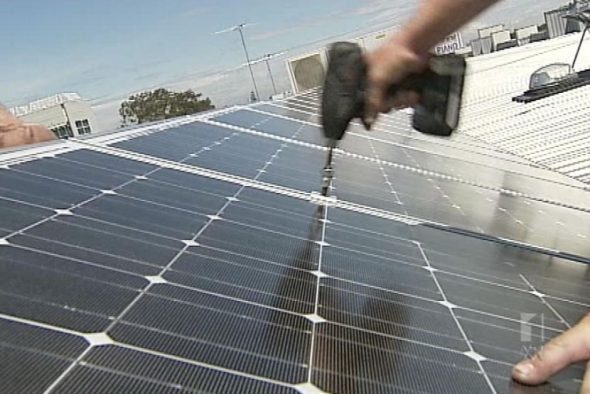The large scale renewables industry in Australia can be reassured by the findings today of the Climate Change Authority in its review of the renewable energy target. Barring any changes, it will now have certainty to finally move forward and deliver on its promised investment. As the Clean Energy Council suggested, the CCA had “hit the bullseye” on renewables policy.
The rooftop solar industry – which may deliver even more investment in dollar terms over the coming decade – can also be satisfied, although may not have quite as comfortable over some of the details. Sure, the CCA has taken the sensible, and practical step, of keeping the small scale renewable energy target separate, and suggests there is no need for a cap. But there is still concern about tinkering with incentives. And given the popularity of rooftop solar, and rising electricity bills, this is something that politicians will need to be across.
Changes to the incentives of rooftop solar are inevitable with the cost of solar PV technology expected to continue to fall, and concerns about ensuring the cost of solar incentives do not get our of hand, as they have done in the past. But the solar industry will be recommending caution on how the CCA proceeds.
Chief among the concerns are the CCA’s suggestion about discounting the number of renewable energy certificates for rooftop solar below 1:1. It suggested that perhaps that one certificate may represent 2MWh of generation from rooftop solar, instead of the 1MWh it is supposed to represent from July next year.
Such has been the dramatic change in the costs of solar PV, that just over a year ago the multiplier under the government’s solar bonus scheme was 5 certificates for 1MWh, but that was clearly too generous once the cost of the systems came down.
The CCA proposal for a discount is an interesting one, possibly based on concerns about equity for non solar households. However, the solar industry will likely argue that on principal, the value of the energy produced by solar on a rooftop should not be discounted to that of a large scale solar farm, or wind energy.
The CCA, however, in responding to the entreaties of big business and the aluminium industry (!?), suggests this discount only be considered if the cost impact of renewable energy certificates on retail electricity bills exceeds 1.5 per cent. Under current estimates of solar PV growth, it is only expected to be 0.8 per cent of retail electricity bills by 2020, but the CCA acknowledges that predictions on the growth of solar PV have been hopelessly wrong in the past.
The other metric it proposes is to define the incentives on the basis of a 10-year payback. The solar industry will be fighting this definition too, suggesting that that is the very minimum – a 7 year payback would be the optimum for household investments, and commercial businesses looking to put solar on the roof would be looking for a 5 per cent payback. In any case, it may be hard to define, as paybacks would vary from city to city, and location to location, depending on the solar resource and the orientation of a roof. The payback on a system may vary from 5 years to 14 years, depending on that location.
Another suggestion by the CCA will also be hotly debated – that of shifting rooftop systems between 10kW and 100kW into the large scale target. This, effectively, refers to the commercial solar market which is expected to be one of the huge growth areas in the coming years.
The CCA is presumably motivated by its desire to cap the costs, but there may also be unintended consequences. One is the overhead costs in intalling metering and monitoring systems for large scale certificates. According to one industry insider, these costs are barely met for 100kW systems, currently included in the LRET, and could be troublesome for smaller units. On the other hand, it could put commercial scale solar in direct competition with the wind industry. That would be an interesting dynamic.






